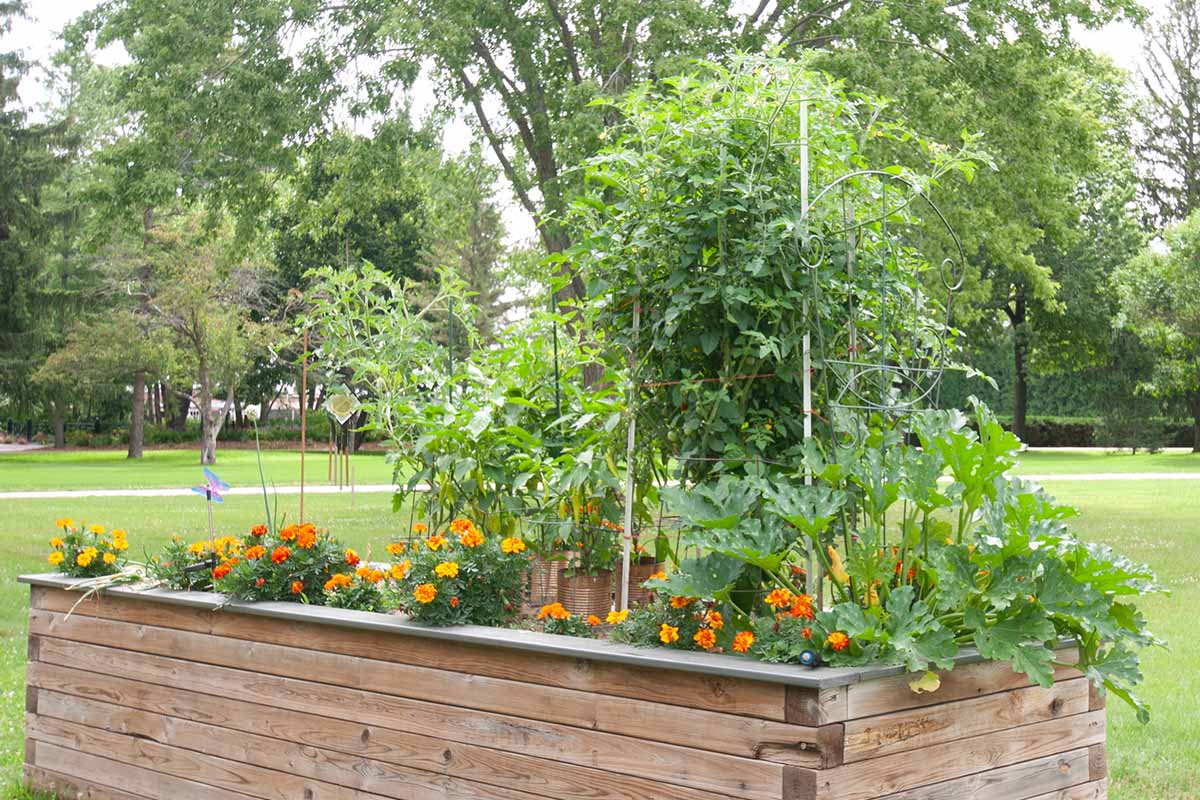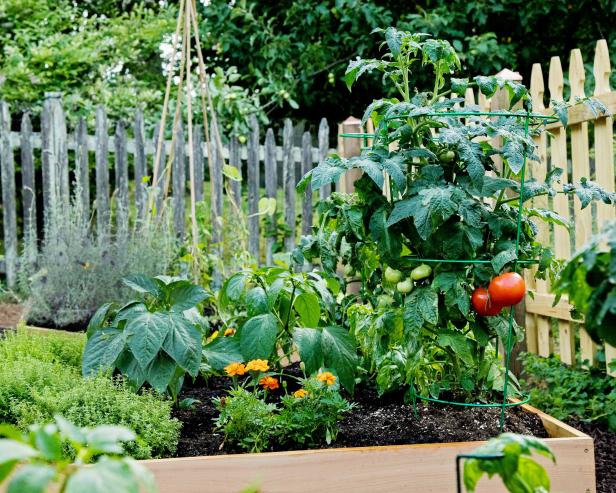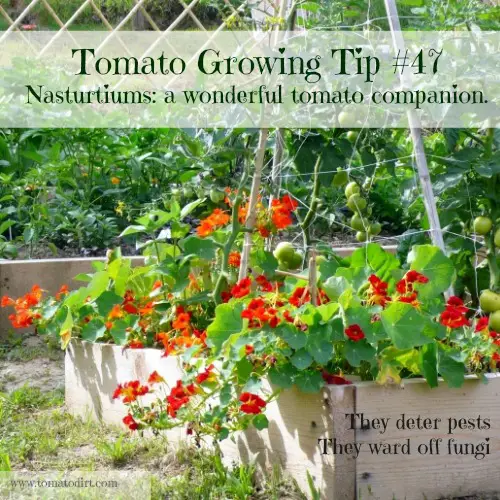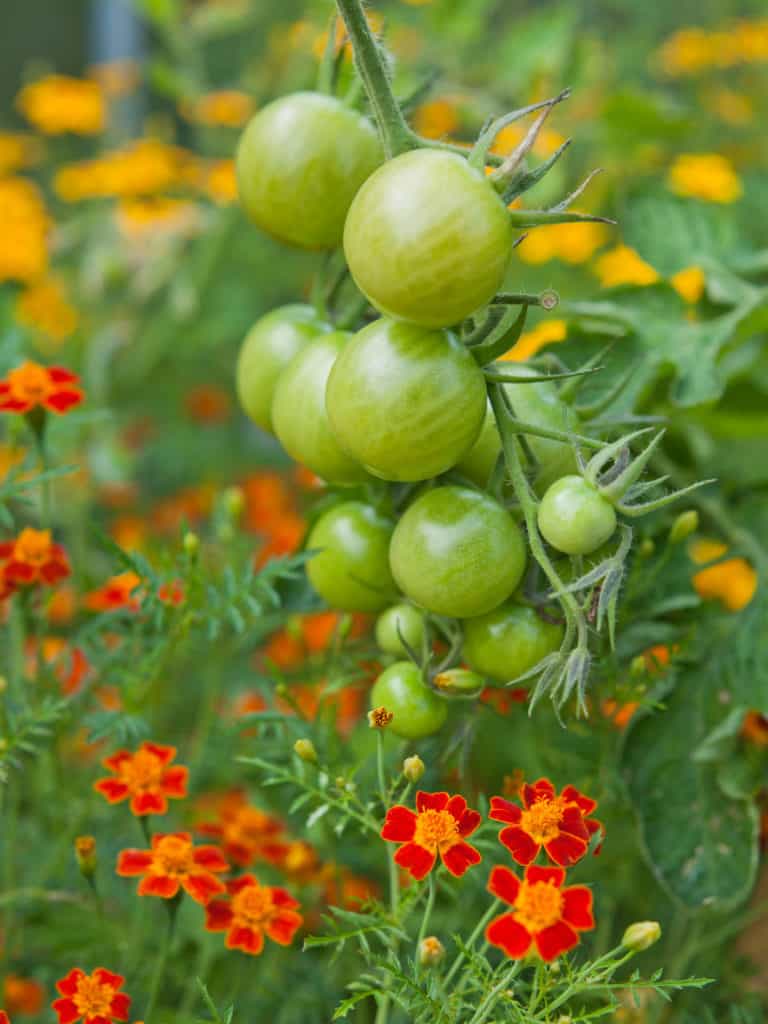Best Companion Plants For Tomatoes
Title:The Best Companion Plants for Tomatoes
Introduction:
Tomatoes are a popular garden vegetable that can be grown in many different climates. They are relatively easy to care for, but there are a few things you can do to help them thrive. One of the most important things is to choose the right companion plants. Companion planting is the practice of planting certain types of plants together to benefit each other. There are many different companion plants that can be grown with tomatoes, but some of the best include:
- Basil: Basil is a classic companion plant for tomatoes. It helps to repel pests and attract beneficial insects, and it also enhances the flavor of tomatoes.
- Marigolds: Marigolds are another great companion plant for tomatoes. They help to repel nematodes, which are pests that can damage tomato roots.

- Chives: Chives help to repel aphids and other pests, and they also add flavor to tomato dishes.
- Onions: Onions help to repel root-knot nematodes, which can damage tomato roots. They also help to improve the flavor of tomatoes.
- Peas: Peas help to fix nitrogen in the soil, which benefits tomatoes. They also help to shade the soil, which can help to keep it cool and moist.
- Carrots: Carrots help to aerate the soil, which can help to improve drainage. They also help to repel pests, such as carrot rust flies.
- Lettuce: Lettuce helps to suppress weeds, and it also provides shade for the soil, which can help to keep it cool and moist.

Main Content:
In addition to the plants listed above, there are many other companion plants that can be grown with tomatoes. Some of the other popular choices include:
- Borage: Borage helps to attract beneficial insects, such as ladybugs and lacewings. It also helps to improve the flavor of tomatoes.
- Nasturtiums: Nasturtiums help to repel aphids and other pests. They also add a splash of color to the garden.

- Asparagus: Asparagus helps to improve the flavor of tomatoes. It also helps to suppress weeds.
- Cucumbers: Cucumbers help to shade the soil, which can help to keep it cool and moist. They also help to attract beneficial insects.
- Sunflowers: Sunflowers help to attract beneficial insects, such as ladybugs and lacewings. They also help to improve the pollination of tomatoes.

Conclusion:
By choosing the right companion plants, you can help your tomatoes thrive. The plants listed above are just a few of the many great options available. With a little planning, you can create a beautiful and productive tomato garden.
Interplanting tomatoes with other plants can help to improve their growth and yield. Some good companion plants for tomatoes include basil, carrots, chives, cucumbers, lettuce, marigolds, nasturtiums, onions, and peppers. These plants help to deter pests, attract beneficial insects, and improve the soil quality.
For more information about interplanting with tomatoes, please visit Home Gardening.
FAQ of interplanting with tomatoes
- What are the benefits of interplanting with tomatoes?
There are many benefits to interplanting with tomatoes. Some of the most common benefits include:
* Increased crop diversity: Interplanting can help to increase the diversity of your garden, which can attract beneficial insects and pollinators.
* Improved pest and disease control: Some plants can help to repel pests and diseases that are common to tomatoes. For example, basil is said to repel aphids, and marigolds are said to repel nematodes.
* Better use of space: Interplanting can help you to maximize the space in your garden. By planting different plants together, you can create a more efficient use of space.
* Increased yields: Interplanting can sometimes lead to increased yields. This is because some plants can help to improve the growth and productivity of tomatoes. For example, lettuce can help to shade the roots of tomatoes, which can help to prevent them from drying out.
- What are some good companion plants for tomatoes?
Some good companion plants for tomatoes include:
* Basil: Basil is said to repel aphids, and it can also improve the flavor of tomatoes.
* Marigolds: Marigolds are said to repel nematodes, which can be a common problem for tomatoes.
* Lettuce: Lettuce can help to shade the roots of tomatoes, which can help to prevent them from drying out.
* Spinach: Spinach can help to suppress weeds, and it can also be harvested early in the season, which can give tomatoes more space to grow.
* Garlic: Garlic can help to repel pests and diseases, and it can also improve the flavor of tomatoes.
- How close should I plant tomatoes together?
The recommended spacing for tomatoes depends on the variety of tomato you are planting. However, a good rule of thumb is to space tomato plants two feet or more apart. This will allow for good air circulation, which can help to prevent the spread of diseases.
- What are some common mistakes to avoid when interplanting with tomatoes?
Some common mistakes to avoid when interplanting with tomatoes include:
* Planting too many plants together: This can lead to overcrowding, which can increase the risk of disease.
* Planting plants that compete for the same resources: For example, you should not plant tomatoes next to plants that require a lot of water, such as cucumbers or melons.
* Planting plants that are incompatible: Some plants simply do not get along well together. For example, you should not plant tomatoes next to potatoes.
Image of interplanting with tomatoes
10 different images of interplanting with tomatoes that are free to use:
- Tomatoes and basil: Basil is a great companion plant for tomatoes because it helps to repel pests and attract pollinators.
- Tomatoes and beans: Beans fix nitrogen in the soil, which is beneficial for tomatoes.
- Tomatoes and carrots: Carrots help to suppress the growth of weeds, which can help to keep your tomato plants healthy.
- Tomatoes and marigolds: Marigolds help to repel nematodes, which are a common pest of tomatoes.

- Tomatoes and lettuce: Lettuce doesn't compete with tomatoes for nutrients, so it's a good choice for interplanting.

- Tomatoes and spinach: Spinach is a cool-season crop, so it can be planted with tomatoes in the early spring or fall.

- Tomatoes and zucchini: Zucchini helps to shade the soil around tomatoes, which can help to prevent blossom end rot.
- Tomatoes and cucumbers: Cucumbers and tomatoes have similar water and nutrient requirements, so they can be interplanted successfully.

- Tomatoes and peas: Peas help to improve the drainage of the soil, which can benefit tomatoes.
- Tomatoes and chives: Chives help to repel pests and attract pollinators, both of which are beneficial for tomatoes.
Post a Comment for " Best Companion Plants For Tomatoes"